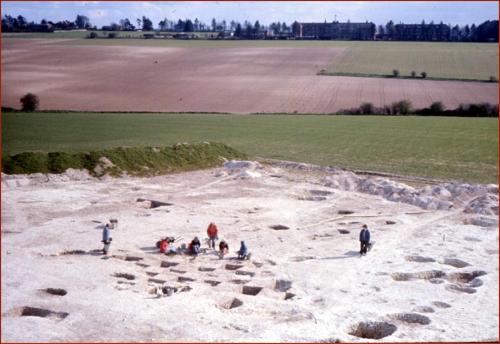
Bird’s-eye-view of excavation in progress; St Swithun’s School on the Alresford Road on the skyline.
A look at classic excavations around the county, large and small; Bronze and Iron Age settlement sites and Romano-British enclosures at Winnall Down near Winchester.
The discovery of a Bronze Age settlement at Adanac Farm – subject of the most recent musing – brought to mind a similar find made forty years ago on the outskirts of Winchester.
A survey of potential archaeological sites along the proposed route of the M3 motorway, in 1974, revealed a complex of enclosures less than 2 km north-east of the centre of Winchester. As the area was earmarked for the ‘Winnall Interchange’ and would be totally destroyed, excavations, supervised by Peter Fasham, took place in 1976 and 1977.
The area examined was 1.26 ha (over 3 acres) in extent. The earliest features encountered were of Neolithic and Middle Bronze Age date (a ring ditch and a disturbed cremation burial respectively), but the later Bronze Age phase, consisting, in all probability, of four post-built round houses, pits and a fence were of particular interest because of the rarity of this sort of site.

A near-vertical view of the site with work in progress – the enclosure entrance is to the left.
The Early Iron Age settlement was more emphatic, contained, as it was, in a D-shaped enclosure, with a single entrance on its west side. More than half a dozen roundhouses, 19 four post structures and 27 pits were recorded within the defined area.
The story continued with an open settlement of at least ten roundhouses, accompanied by 16 four-post structures and more than 80 pits. The pits, as with the earlier examples, provided evidence of general domestic activities, such as animal butchery, cooking, crop production and weaving as well as ritual practice.
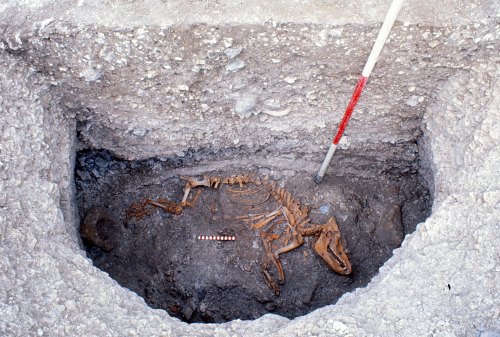
Ritual rest? Pit ‘6595’ contained the complete skeleton of a two-year old sow. The upper levels of the feature also contained the skeleton of a dog.
Eighteen complete, or near complete, burials were also unearthed, including ten infants. There were also 25 instances of ‘loose’ human bone. Finds of pottery and stone were abundant, but small finds, such as jewellery and tools, were not as plentiful.
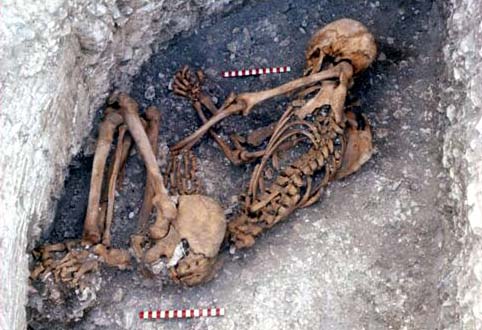
One of the Iron Age human burials. This adult male (# 500) was also placed near the bottom of a pit. Look closely – it’s a masterpiece of excavation.
In the Romano-British period four enclosures, represented by about 30 lengths of ditch, some recut, were linked by a track. There were five burials from this phase, the majority of infants.
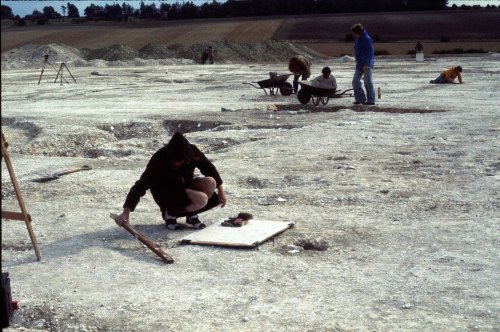
Planning in progress
The excavator, while reflecting on the ‘long and interesting sequence of events…at Winnall Down’ reflected on how it formed only one part of the settlement history of the area. In this regard he drew attention to Winnall Down II, a second large enclosure to the east – outside the threatened area. In 2006, this was sampled by Oliver Davis. He excavated two sections across the ditch and two small areas in the interior, encountering eight pits. The pottery present was similar to that from Winnall Down I (the enclosure phase), making the sites contemporaneous in the 4th century BC at least.
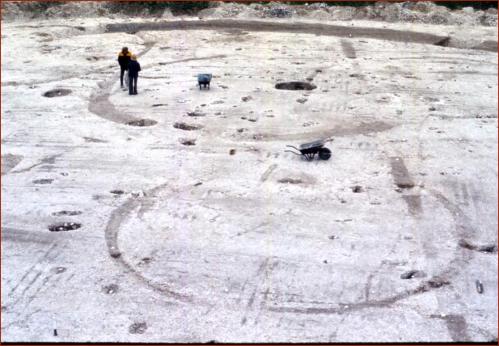
Roundhouse ring ditches
References:
Fasham, P 1985, The Prehistoric Settlement at Winnall, Down, Winchester, Hants Field Club & Archaeol Soc, Monograph 2
Davis, O 2014, Excavations on a Second Iron Age Enclosure on Winnall Down, Winchester, 2006, Proc Hants Field Club & Archaeol Soc 69, 23-48
Archive: A1978.20 held by Hampshire Cultural Trust
Series by Anne Aldis, Dave Allen, Sarah Gould, Lesley Johnson, Jane King, Peter Stone
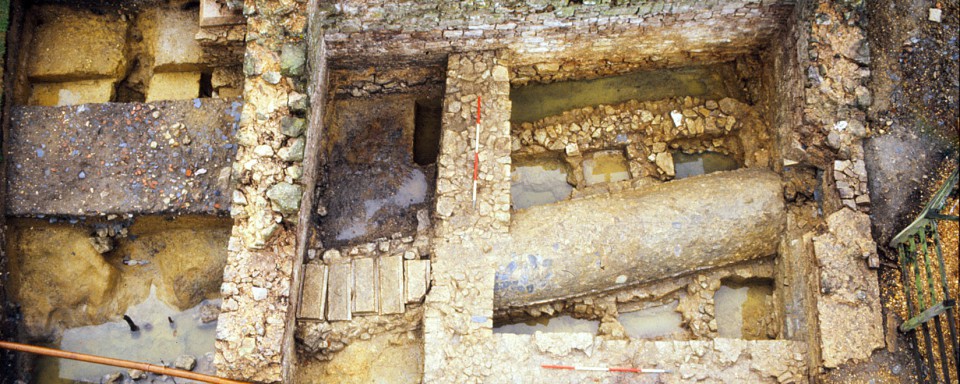

![Grand Teton [Explored 4/28/24] Grand Teton [Explored 4/28/24]](https://live.staticflickr.com/65535/53683680357_50bfb8a6e8_s.jpg)
